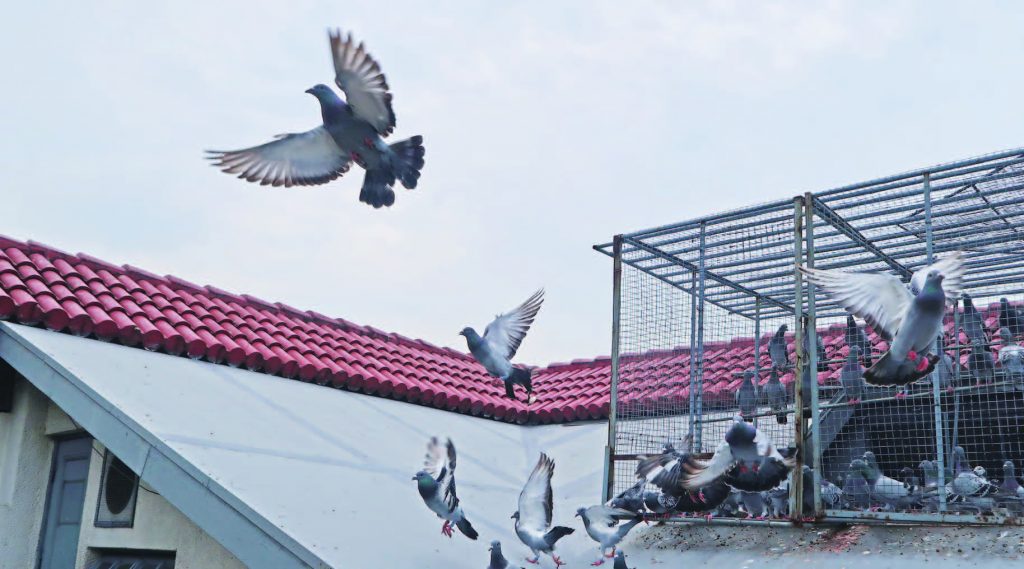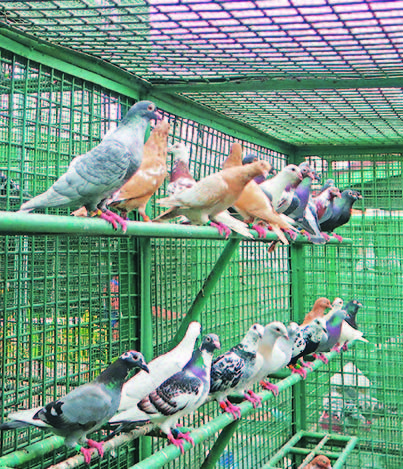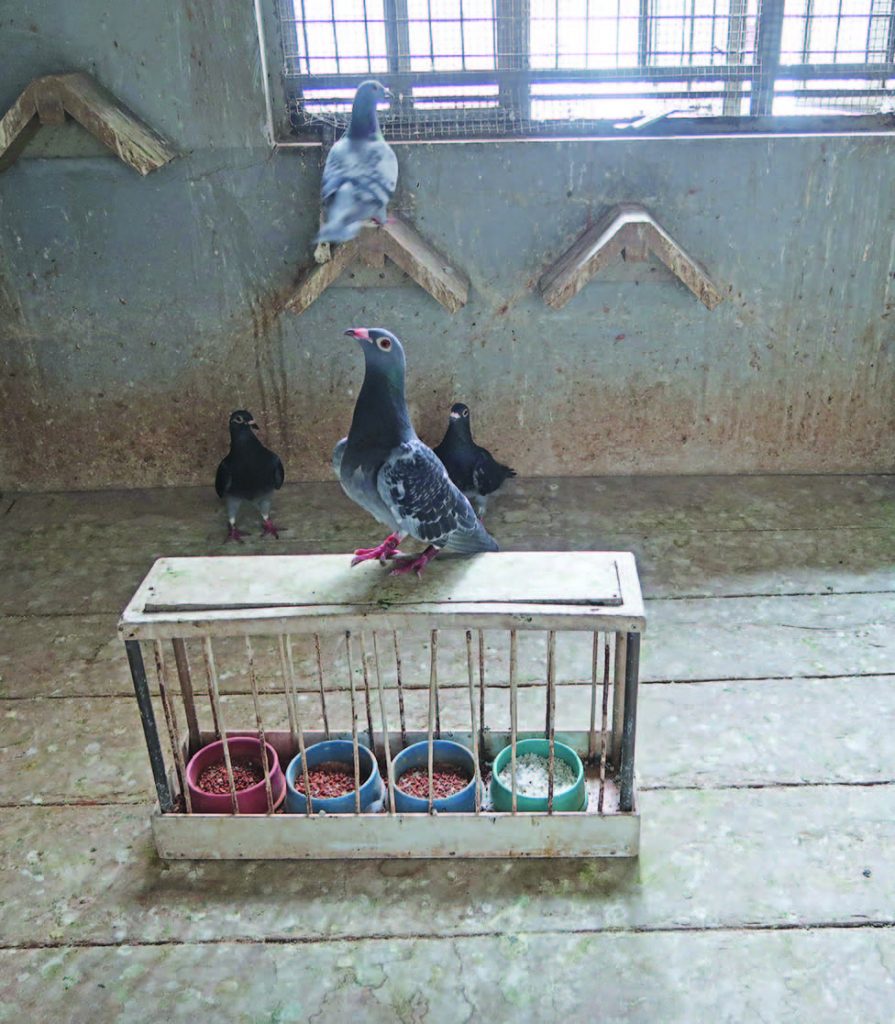The first thing to consider when buying your pigeon is pedigree. It plays an important factor when choosing pigeons: It is only through the pigeon’s history that one would get a glimpse of their performance. Were their predecessors performers in long-distance races or were they better in sprints? How about their sire and dam — were they ace pigeons, too? How about their siblings, did they also perform well in races?
You see, choosing a good line of consistent winners is akin to choosing a good pigeon. While champion pigeons is good, one-time champs won’t necessarily produce excellent birds. Consistency is key. If a bloodline consistently wins races season after season (not necessarily always on top), the family is a winner and has a good chance of having excellent racers. Let me give an example: my Crack 52 line.

Crack 52 is a pigeon of Josef van den Broucke (vdB) origin, given to me by my uncle Victor Lim. The pigeon, as foreseen by my uncle, gave me excellent race results, winning in 1982 as 6th place in a race by the Philippine Homing Pigeon Association (PHA). While they didn’t win first, consistent with its family’s record, they also won 17th place in Calbayog and 31st in Matnog.
Moreover, the pigeon is an excellent breeder with a line that crosses well with other pigeons. Descendants of this Van den Broucke-Victor Lim pigeon gave me numerous race victories. Two pigeons from my loft that won 7th and 11th during the 7th McArthur National Race were both from the Crack 52 line.
There are other pigeon lines in the Philippines who have consistently won races: Kaluluwa Line of Benito Go Que, Victor Lim’s Pogi Line (descended from his speed bird “Pogi”), Double Frisco line of Tommy de Vera, Nelson Chua’s Line which fanciers called “Babaero Line”, and many others. We are lucky that in the country alone, a lot of excellent lines that have continuously performed well are within reach.

Once the pedigree has been determined, it’s time to check how well the line crosses with other pigeons. While some fanciers prefer pigeons of pure lines, my long experience in pigeon racing has shown me that outcrosses perform better, have more vigor in racing, and produce excellent fliers and breeders. An example is an outcross I made of Crack 52 and my Flying Machine line, which produced my Flying 52 line. Having a pigeon that crosses nicely with other pigeons is a bankable addition to your loft — an asset that will help you create a good fleet of winged athletes.
Selecting your pigeon based on its bloodline and pedigree will give you an idea where to get your right bird. In my opinion, though, not all pigeons from big lofts or fancier names will give you excellent pigeons. Sometimes, a small loft that does not advertise but has a solid and consistent track of winning races can give you a better pigeon than a big, famous one that breeds for commercial purposes. Don’t get swayed by fancy names or popular names. The key is consistent record and good pedigree.
Local versus Imported
While many fanciers who have the financial capability to import or buy pigeons from abroad (i.e. Belgium and The Netherlands), one advise I can give those who are starting out in this sport or hobby is to source your birds locally. One, local birds are much cheaper compared to imported pigeons. Two, locally bred pigeons have been developed by our Filipino Fanciers to suit the racing conditions in the country. European race and Philippine races differ a lot in terms of rules and duration, climate, length/distance, geographical set-up, among others. A lot of resources and time went into developing well-established long-distance line. Buying from well- established local breeders who have consistently won races is buying a pigeon that is the product of years of breeding and racing. While these champion breeders do not usually sell their champion pigeons, you can purchase a sibling or a descendant which is almost good as having the champion pigeon itself.
If you still do not have any clue which breeders or fanciers to approach, consider buying from consistent top winners of the McArthur National Race. This is the biggest, and considered most prestigious annual race in the country with thousands of birds competing for long-distance race of 700 kilometer or so.
Selection by Hand
Next would be hand selection. This means getting a feel of the pigeon. Usually, knowing good pigeons by hand takes a special kind of skill that a fancier acquires only through years of experience.
Choose healthy ones, not those who have just recovered from sickness, as they may still carry disease. Healthy pigeons have shiny, soft feathers and bright eyes, and they look alert.

Nervous birds tend to get stressed easily. The only good eyes for me are those that are alert, glossy, bright, and clear, pointing to good health and, at a certain level, intelligence.
Soft feathers are another good indicator. Hard feathers will make the bird exert more effort to fly, and it won’t last a long flight. Soft ones indicate flexibility, an important feature of any good long-distance bird.
In my decades-long experience of handling and racing pigeons, I can say that good long-distance pigeons usually have a small to medium built, a flexible body, long wings, and excellent balance.
Health
Pigeons are only as good as their health. Make sure that the pigeon is in top shape and has never been sick, and make sure that a dam or sire are healthy at the time of breeding.

Of course, knowing all this does not make one an instant expert. One advice I can give any new fancier starting out in the sport is do your research, join a reputable club, and make friends. Visit various good lofts and check their pigeons. Use the power of observation to compare pigeons you see. Do not be shy to ask questions but be mindful and be respectful. Pigeon racing is a gentleman’s sport. Fanciers treat each other as brothers in what we call a kalapatiran — a brotherhood founded on mutual respect and integrity, one that is willing to share with you tips and knowledge on how to succeed in the sport.
This appeared in Animal Scene magazine’s January 2019 issue.






